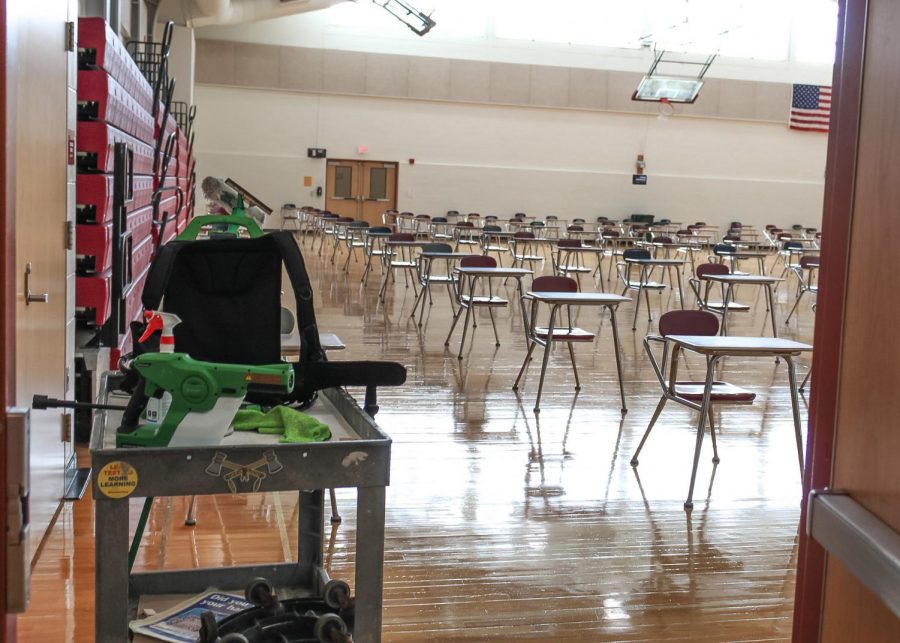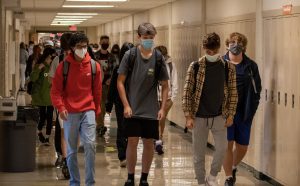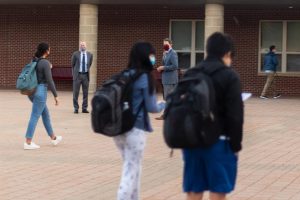COVID-19 safety protocols implemented to keep risk level low
The C gym, which normally would house many enthusiastic gym students, is now filled with desks providing students with a place to eat lunch. The cart on the left shows some of the cleaning equipment used to frequently sanitize every area after students use it.
November 3, 2020
In order to keep the COVID-19 risk level low, many new safety protocols, including the creation of a volunteer medical advisory team and social distancing guidelines, were implemented this year.
During the summer, the volunteer medical advisory team helped to develop all of the guidelines and protocols. Some of the protocols include mask requirements, a daily screening checklist and cleaning and disinfecting classrooms between classes. The school also brought in a volunteer air quality engineer who did an extensive evaluation of the buildings’ HVAC systems and air quality.
“The most important things to remember to keep our risk low [are to] wear a mask, stay six feet away, wash your hands, avoid large indoor social gatherings, always wear a mask if you are with people from outside your household– even if you are outside,” Director of Health Mary Ellen Duggan said in an interview via email.
Following the new protocols, in the event of in-school transmission beyond one cohort, the COVID Response Team will be activated to consult with the local Board of Health in order to determine the next steps. The entire school could either be closed for a short time for extensive cleaning or for a longer time, such as a 14 day quarantine period.
“These guidelines were created to keep everyone safe and it is everyone’s responsibility to abide by them,” Duggan said in her email. “The only way we are going to be able to stay in-person is if people keep their risk low — both in school and out of school.”
According to an email sent by Superintendent Greg Martineau, in addition to these protocols, the district joined the “Safer Teachers, Safer Students” collaborative, consisting of various Massachusetts school districts.
“The Collaborative is pursuing affordable and sustainable testing options, and if successful, the Collaborative’s effort will demonstrate how to reduce fear and anxiety about return-to-school, pave the way toward ensuring that in-person public school K-12 learning can continue as long as possible and increase the safety of both teachers and students,” Martineau said in his email.
In the event of students engaging in high risk behaviors, in-person learning and extracurricular activities will not be able to continue.
“All of our actions have consequences, in addition to jeopardizing the health of themselves and their household members, the results of high risk behavior could be totally remote learning with no in-person learning, which would lead to the cancellation of all athletics and extracurricular activities,” Duggan said in her email.
More information on the school’s safety protocols can be found on the district’s reopening website https://sites.google.com/nsboro.k12.ma.us/reopening-plans-2020/home/appendices/appendix-a?authuser=0













